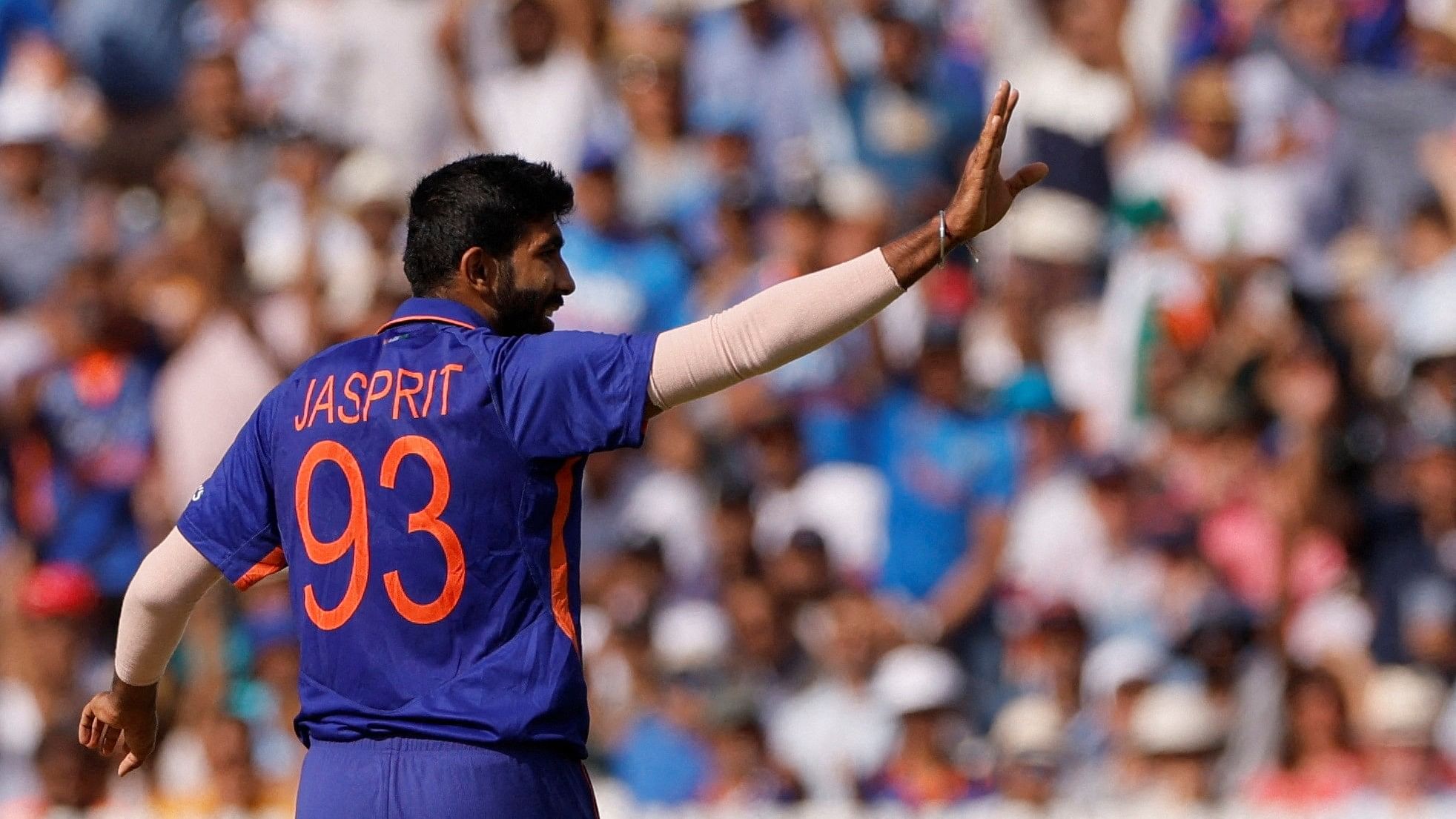
Indian bowler Jasprit Bumrah.
Credit: Reuters File Photo
Of course, they have bowled just eight overs each spread over two games. Agreed, they have been against Ireland even if T20 cricket provides for a greater level-playing field. The signs, however, were unmistakably encouraging. The sight of Jasprit Bumrah and M Prasidh Krishna operating in tandem must have come as a reassurance to the Indian team's think-tank ahead of a crucial three months or so.
With a slightly modified action, Bumrah showed that he remains as lethal as he was before being sidelined for almost a year due to back injury which had to be repaired surgically. You could see the rustiness, but the pacer has lost little of his chutzpah. "I wasn't nervous (playing after a long hiatus)," he said after the first match. Given how he tricked and tormented the Irish batters, one could hardly disagree with the stand-in skipper.
Equally pleasing was Prasidh's successful return to the international fold. Proving that both his pace and bounce are intact despite spending most of last year tending to his troubled back, the lanky pacer betrayed few signs of a bowler who had been away for as long as he was. The duo's absence had had an adverse effect on India's performance, especially in white-ball cricket, in the last year or so and their return just ahead of the home World Cup couldn't be more opportune.
Caught between managing the workload of players and the long absence of Bumrah and Prasidh, India struggled to put up a decent pace unit on the field. Nowhere was it more evident than on the recent tour of the Caribbean, where India lost the five-match T20I series to the hosts. The return of Bumrah and Prasidh suddenly has left India with a problem of plenty, which is always a more desirable problem to have.
The addition of the two not only gives the Indian attack a sharper edge but also variety. Bumrah, Mohammed Shami, Mohammed Siraj and Prasidh bring their own different skills to the table.
Apart from his pace and disconcerting bounce, Bumrah can produce a slower one or a toe crusher at will. Shami, with a seam position to die for, isn't much of a believer in variety but if he gets into a rhythm, few can match his wicket-taking abilities. Siraj has rapidly developed into a high-class white-ball exponent, especially with the new ball which he gets to move around quite prodigiously. Prasidh is a rare breed of Indian fast bowler who is tall and uses his height to generate steep, disconcerting bounce.
As good as this foursome can be, all of them are tail-enders with Shami, and to an extent Bumrah, capable of using the long handle to good effect. But their success rate with the bat is as rare as Rohit Sharma restraining himself from pulling a short ball. India, therefore, may want to fall back on someone like Shardul Thakur, who provides some meat to India's batting line-up that has often been forced to go in with a long tail to its own detriment. That said, Thakur isn’t a genuine all-rounder in the Hardik Pandya class, so India will have to ponder long over whether they want a wicket-taking pacer at No. 8 or someone who can chip in with the bat and bowl brisk medium-pace.
Including the three-match ODI series against Australia, India will have a maximum of nine matches to firm up their attack before the World Cup, and they have a healthy mix of options to pick from.